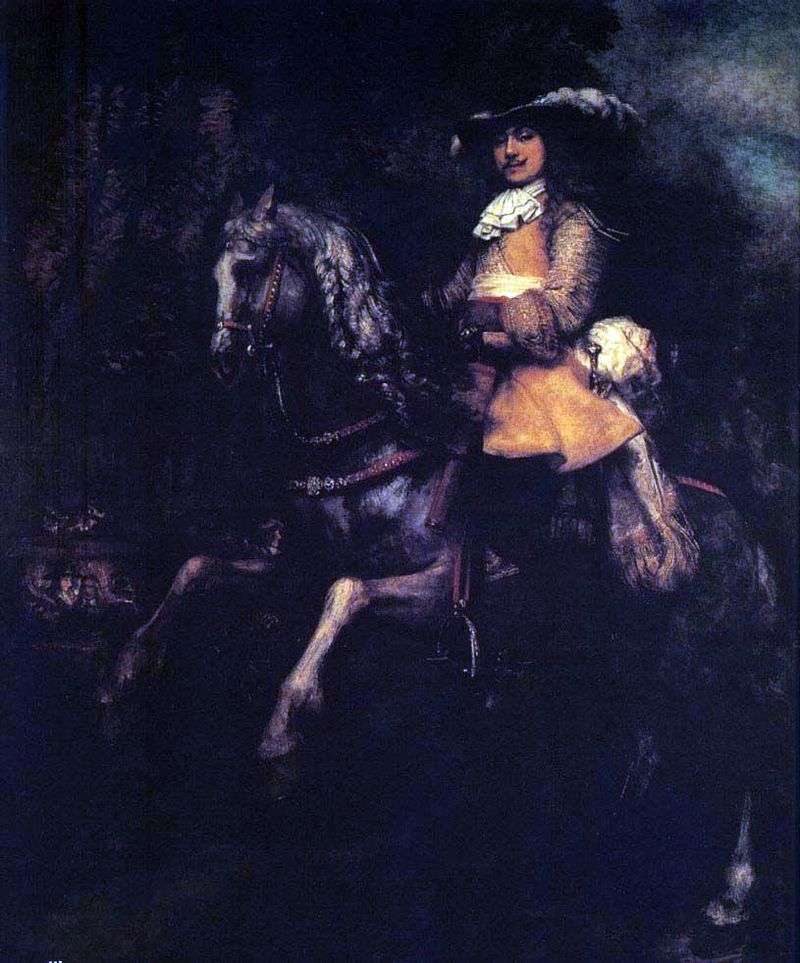
Painting of the Dutch artist Rembrandt van Rijn “Hendrickje, entering the river”. The size of the painting is 62 x 47 cm, oil on canvas. The third companion of life and the housekeeper of Rembrandt is hardly the twenty-five-year-old daughter of Sergeant Hendrickje Stoffelsdohter Yeager.
In the summer of 1654, the Reformational Church Council of Amsterdam weaned her from the evening communion due to “dissolute cohabitation with the artist Rembrandt,” in October of the same year, daughter Cornelius was born.
Already in 1653, a difficult year of crisis after the defeat in the first Anglo-Dutch naval war of 1652-1654, Rembrandt began to face material difficulties, orders of rich burghers became more rare, the number of students decreased, the debts for buying a house together with interest still make 8470 guilders, he has to borrow money from friends three times, two of them – 4000 guilders.
Finally, in July 1656, in a petition to the relevant court, Rembrandt, “due to losses in the craft and at sea”, declares himself insolvent and asks for the transfer of his fortune to creditors. Thus, he avoids a complete bankruptcy and debt prison.
Rembrandt van Rijn’s ideas about man were consonant with Pascal’s thoughts, according to the philosophy of which man is “something wonderful” and “keeping the truth” on the one hand, and on the other hand it is a “vessel of uncertainty and mistakes”, this is a contradiction in itself. This representation of the artist is partly embodied in the portraits of Hendrickje Stoffels, it shines in the breathtaking physicality of the engraved images of the nude model and in the warm look of Hendrickje, whose beautiful, resting portraits are filled with love and humanity.
However, “it is dangerous to talk about these works of the later years. Is not what we see just an integral part of what we feel with reverence, are these feelings so airy that they cannot be expressed in words?” . The nimbus of ineffability arose not so much from Rembrandt’s consciously mysteriously expressed and mystifying goals, but rather the opposite.
 Hendrickje by the window by Rembrandt Harmens Van Rhine
Hendrickje by the window by Rembrandt Harmens Van Rhine Retrato de Hendrickje Stoffels – Rembrandt Harmens Van Rhine
Retrato de Hendrickje Stoffels – Rembrandt Harmens Van Rhine Portrait of Hendrickje Stoffels by Rembrandt Harmens Van Rhine
Portrait of Hendrickje Stoffels by Rembrandt Harmens Van Rhine Saskia van Eilenburg by Rembrandt Harmens Van Rhine
Saskia van Eilenburg by Rembrandt Harmens Van Rhine Fun Society (Self-Portrait with Saskia on Your Lap) by Rembrandt Harmens Van Rhine
Fun Society (Self-Portrait with Saskia on Your Lap) by Rembrandt Harmens Van Rhine The Mill by Rembrandt Harmens Van Rhine
The Mill by Rembrandt Harmens Van Rhine Hendrickje por la ventana – Rembrandt Harmens Van Rhine
Hendrickje por la ventana – Rembrandt Harmens Van Rhine Frederick Riel on horseback by Rembrandt Harmens Van Rhine
Frederick Riel on horseback by Rembrandt Harmens Van Rhine